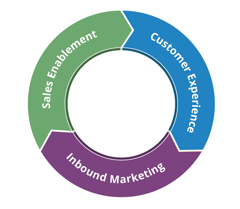In the digital age, video content has become one of the most powerful tools in a marketer’s arsenal. Its ability to engage, educate, and inspire audiences is unparalleled. However, creating great video content is only half the equation. To truly maximize the value of your video marketing efforts, you must measure their performance, not just broadly, but with purpose and precision.
Many marketers are tempted to focus solely on surface-level data, such as views or likes. While these metrics have their place, they often fail to tell the whole story. The key to long-term success lies in tracking metrics that align with your strategic goals—those that reflect engagement, conversion, and customer impact.
This article examines the key video metrics to track and how to interpret them to drive informed decision-making and sustainable growth.
-
View Count: A Starting Point, Not the Finish Line
View count is one of the most accessible and commonly referenced video metrics. It tells you how many times your video has been watched. While this number can be impressive at face value, it doesn’t necessarily indicate impact or quality of engagement.
Why it matters:
-
Helpful in gauging initial reach or brand awareness.
-
Helps compare performance across platforms.
What to watch out for:
-
Not all views are equal—platforms define a “view” differently (e.g., 3 seconds vs. 30 seconds).
-
Doesn’t indicate whether viewers retained information or took further action.
Pro tip: Use view count in tandem with deeper metrics to understand the true effectiveness of your content.
-
Watch Time and Average View Duration: Measuring Content Stickiness
Watch time refers to the total number of minutes viewers have spent watching your video, while average view duration is the average length of time viewers spend watching before exiting. These are critical for evaluating how engaging your video content truly is.
Why it matters:
-
A high average view duration suggests your content is compelling and well-paced.
-
Platforms like YouTube prioritize videos with strong watch time in their algorithms.
How to use it:
-
Compare watch time across videos to determine which formats or topics resonate most.
-
Identify drop-off points to refine future scripts and editing.
-
Engagement Rate: Understanding Active Participation
Engagement rate encompasses actions such as likes, comments, shares, and clicks. These signals show that viewers are not just passively watching...they’re actively connecting with your content.
Why it matters:
-
Indicates emotional or intellectual resonance with your audience.
-
High engagement can extend reach through organic sharing and algorithm boosts.
What to track:
-
Comments and shares (qualitative feedback)
-
Reactions and likes (surface-level sentiment)
-
Click-through rates on embedded links or CTAs
Traditional wisdom holds true: when people are moved, they act. Engagement is one of the clearest indicators that your message landed well.
-
Click-Through Rate (CTR): Linking Attention to Action
If your video includes a call to action—such as “Learn More,” “Sign Up,” or “Download Now”—CTR tells you how many viewers followed through. CTR is especially relevant in product videos, webinars, or social ads where conversions are key.
Why it matters:
-
Directly measures how effective your video is at driving interest in the next step.
-
Low CTRs can signal mismatched messaging, unclear CTAs, or targeting issues.
Pro Tip: Always pair strong creative with clear, compelling next steps. The more aligned your content and offer are, the higher your CTR.
-
Conversion Rate: Measuring Business Impact
The ultimate metric for performance-driven marketers, conversion rate tracks how many viewers completed a desired action after watching your video, whether that’s making a purchase, registering for an event, or downloading a resource.
Why it matters:
-
Directly ties video performance to business outcomes.
-
Helps justify the budget and resources allocated to video marketing.
To measure effectively:
-
Use UTM tracking links for attribution.
-
Leverage integrated analytics platforms or CRM systems for closed-loop reporting.
Forward-thinking marketers don’t just want views...they want results.
-
Audience Retention: Optimizing for Attention Spans
Audience retention graphs show how long viewers stay engaged throughout the entire video. They help pinpoint exactly where interest begins to wane.
Why it matters:
-
Identifies weak segments in content structure or delivery.
-
Informs more effective editing and scripting for future videos.
What to look for:
-
Sudden drop-offs early in the video (suggests a poor opening hook)
-
Consistent drop-offs at similar time stamps (indicates pacing issues)
-
Traffic Source and Device Type: Contextualizing Consumption
Understanding where and how people are watching your videos helps you tailor your content strategy.
Why it matters:
-
Different platforms require different styles, lengths, and tones.
-
Mobile vs. desktop viewing can affect layout, text size, and pacing.
Examples:
-
A video with high mobile views may need larger subtitles or vertical framing.
-
If traffic is primarily coming from email, ensure the video complements that audience’s intent.
Respecting the context in which your audience consumes content is a timeless best practice.
-
Social Sharing and Virality Indicators: Measuring Word of Mouth
Sharing is one of the highest forms of engagement. It reflects trust and endorsement. When your audience shares your content, they’re doing your marketing for you.
Why it matters:
-
Shared videos reach new audiences organically.
-
Reflects emotional connection and perceived value.
A video worth sharing is a video worth investing in.
A Framework for Measurement: Align Metrics with Goals
Every metric gains meaning only when aligned with clear objectives. Before launching your video, ask:
-
Is our goal brand awareness, lead generation, or customer education?
-
What action do we want viewers to take?
-
Which platforms and formats best support that action?
With these answers, select metrics that align accordingly:
Objective: Brand Awareness
Priority Metrics: View count, watch time, audience retention
Objective: Engagement
Priority Metrics: Likes, shares, comments
Objective: Lead Generation
Priority Metrics: CTR, conversion rate
Objective: Customer Retention
Priority Metrics: Watch duration, completion rate
Video is more than a creative expression. It’s a strategic asset. But to unlock its full potential, marketers must look beyond surface-level numbers and measure what truly matters. By focusing on meaningful metrics that align with your business objectives, you not only gain insight but also gain an advantage.
In a world where attention is fleeting and competition is fierce, data-driven video marketing provides clarity, direction, and results. The key lies in knowing which numbers to trust and how to act on them.
Do you want to discuss how you can leverage video in your marketing efforts? Schedule a complimentary discovery session with our team.


__Square.png?width=250&height=250&name=Marketing_Hub_(1)__Square.png)




.png?width=250&name=diamond-badge-color%20(1).png)
